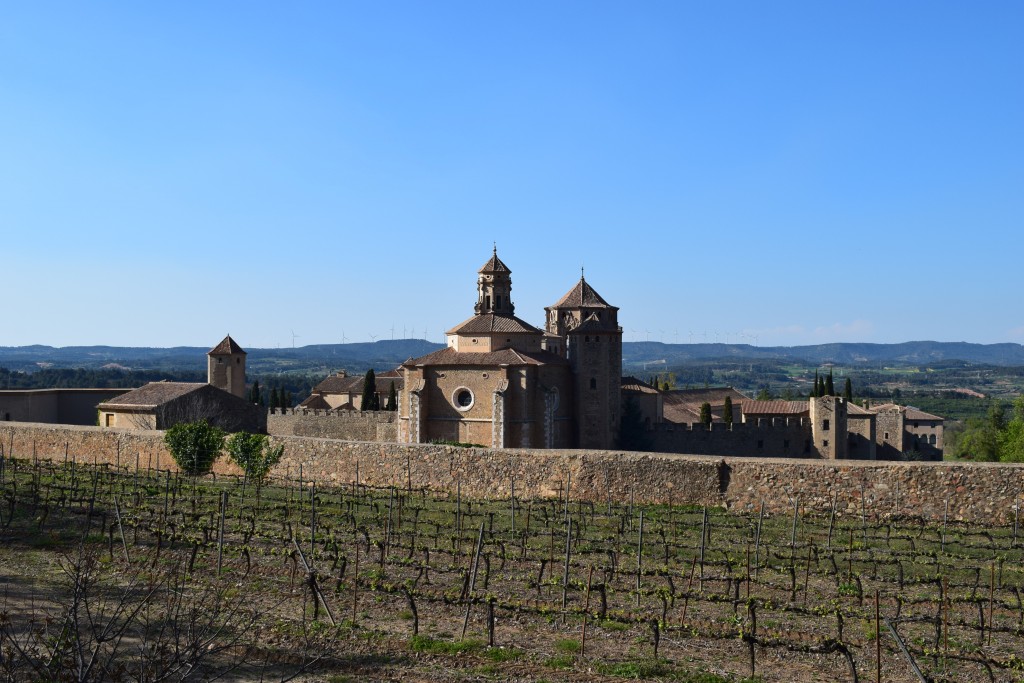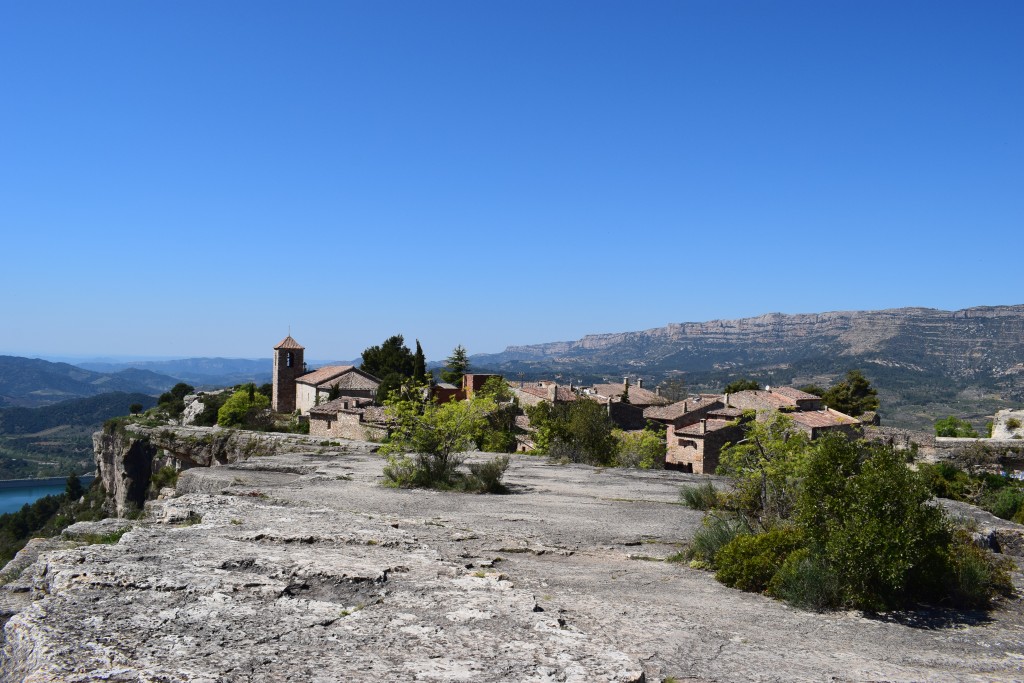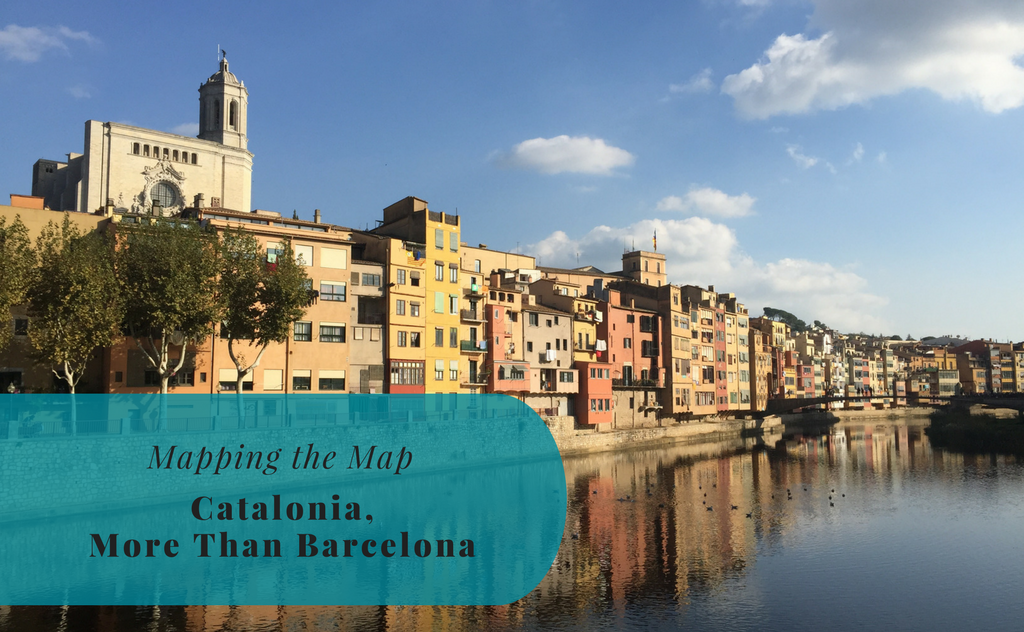This is a guest post from our friends at Mapping the Map. We hope that you will enjoy this blog post about Catalonia.
Barcelona, a fashionable city visited by millions of people every year, home of Gaudí heritage and cradle of Art Nouveau, bathed with the Mediterranean waters and sunshine almost every day. It is a cosmopolitan city that loves cultures and foreign people. Openminded Catalans welcome every visitor and are proud to show the capital of Catalonia. But, what if there is more than what you know about Barcelona? What if you take a train, a bus or a car to see what you can find outside the city? In this post, we have listed some places that will make you wonder why you haven’t visited more than just one city in Catalonia.
Girona
You may have heard about Girona as a filming location of Game of Thrones or as a starting point for a visit to the renowned Costa Brava.
Girona can be easily reached from Barcelona by high-speed train (a bit more than 30 minutes) departing from Barcelona-Sants station. There are also ordinary trains departing from several stations in Barcelona. These trains take between 1 and 2 hours, depending on the type of train and the number of stops during the route. By car, you can get to the city from Barcelona in less than one hour and a half. Moreover, Girona has a small airport (called Girona-Costa Brava) with cheap flights from and to a good number of European cities.
Girona is handy. You can discover it on foot in just one day. It has a special charm, let’s call it Medieval Charm. Its old quarter is one of the most beautiful and well preserved medieval neighborhoods in Europe. Its history is fascinating and its cathedral is an incredible masterpiece with the widest gothic nave in the world, only behind Saint Peter Basilica in the Vatican City.
In the Jewish Quarter of Girona lived one of the most important Jewish communities in the Western world. The main street of the quarter is the “carrer de la Força”, where Jewish families established in the XII century. The Jewish community of Girona grew and they say that approximately 800 Jewish coexisted in the city together with the Christians.
And don’t forget to cross the Eiffel Bridge. From this hotspot you can have the best pic of Girona: “Les cases de l’Onyar“, hanging colored houses all along the Onyar River.


Montserrat
The legend says…
Once upon a time, two shepherds were grazing their sheep on the mountain when they saw a light inside a cave. They decided to explain this to the priest of Monistrol village. The Bishop of Vic decided it was needed to know what was happening inside that cave and went there with the two shepherds. When they arrived they saw the light and angelical voices singing. Inside the cave, they found a statue of the Virgin Mary with Jesus on his knees. The Bishop decided to take it to Manresa but when they arrived at the level of the actual Monastery they couldn’t do any step further. The Virgin was so heavy at that point that their interpretation was that she did want to stay in that place, Montserrat.
Montserrat was once a delta of the Tetis Sea. It was before the growth of the Pyrenees, before the actual Iberian Peninsula and the rest of Europe merged. But then the tectonic forces pushed the Iberian plate towards the north and the land started to compress, fold and grow towards the sky. The Pyrenees were created and other mountains appeared where there used to be sea, plains or deltas. Nowadays Catalonia stands on the land that once was under the water and in the center of the country; Montserrat is still the light that guides the Catalans. It is our sacred mountain and a must-see place when you visit Barcelona.
It is very easy to reach the base of Montserrat from Barcelona. You have multiple options. The best one is to take the FGC train in Plaça Espanya to Monistrol, and then use the funicular that reaches the Sanctuary. There are many combined tickets based on the places you want to visit in the mountain.
Nowadays you can see the Moreneta inside the monastery and this is a place full of pilgrims. But you can also go towards the Santa Cova, the cave where the Virgin was found by the two shepherds. It is just a 30 minutes walk or you can use another funicular, the Santa Cova Funicular. There is a small hermitage at that place nowadays and you can feel the peace and silence.

Poblet
The Poblet Monastery, a Cistercian abbey, is a World Heritage site since 1991.
The Poblet Monastery, which is considered one of the largest and most complete Cistercian abbeys in the world, was founded in 1150. Ramon Berenguer IV, Count of Barcelona, gave that land to the Abbey of Fontfroide (located near Narbonne, in the south of France) after the conquest of Lleida from the Moorish, so that the monks could build a Cistercian monastery there. The reasons for that contribution? To create a Christian spiritual centre in the gained territory and to cultivate the abandoned fields. Twelve monks arrived in Poblet to comply with that commission.
The monks in Poblet had always had a great winegrowing tradition. As you will easily see in the surroundings of the building, this tradition has been kept until today. And inside the Monastery, there is a lot to see. The magnificence of the abbey and the history behind it is really impressing.
If we had to choose one place in the Monastery where you can feel the history of Catalonia, this place is the royal tomb that can be found in both sides of the altarpiece and that was restored by Frederic Marès in the middle of the XX century. Among other royals, here lay the remains of Jaume I The Conqueror, who lived in the XIII century and decided to be buried in the Poblet Monastery. Its name is due to that fact that he led the conquest of the Balearic Islands and Valencia from the Moorish.

Tossa de Mar
When Summer arrives, all Catalans go and bath in the Costa Brava –in our opinion, one of the finest landscapes of Catalonia. It may not be the typical exotic coast, but it has the incomparable Mediterranean charm of its cliffs and its plant life.
Tossa de Mar is defined by its castle, built in the XII century at the top of Mount Guardí, and its walled ancient town (Vila Vella). The panoramic view of Tossa de Mar invites you to cross the gates and explore the medieval town, dominated by the lighthouse (far).
But we think that the most magical place in Vila Vella is the ruin of the old Gothic church of Sant Vicenç, which was completed in the XV century and destroyed at the beginning of the XIX century when the French stocked explosive there.
If you love hiking like we do, you will be pleased to know that you can visit the villages and the beaches of the Costa Brava by foot. You just follow Camí de Ronda, a footpath built along the coast to help the policemen supervise it and stop smuggling. Nowadays, the path allows you to walk from one bay to the other to have the best views of the beaches, the coast, and the sea.
The waterfront and the medieval town of Tossa de Mar are full of restaurants where you can enjoy the local gastronomy (seafood and paella are a must!).

Siurana
Siurana is a fantasy village located at the top of a cliff (more than 700 metres high), with amazing views of the Montsant mountains, a place highly visited by rock climbers. It is part of the Priorat region, the land that produces the well-known wine that is traded from Catalonia to the world.
Nowadays, you will see that the Romanesque church of Santa Maria de Siurana stands out in the skyline. However, Siurana was the last Moorish bastion in Catalonia. They say that knights of four counties were needed to conquer the village.
The legend says that Abd-el-Azia was the beautiful queen of Siurana when a Jewish traitor gave the keys of the Castle to the Christians. Abd-el-Azia was having a party in the Castle when the betrayal took place and an arrow crossed the window and reached the table. It was too late and the queen didn’t want to be defeated by the enemy. So she got on her white horse and she threw herself through the cliff. The legend says that in that cliff, called “Salt de la Reina Mora” (which means the Jump of the Moorish Queen), you can still see the horse footprints that remind of the tragic end of Abd-el-Azia.
And after the visit, you may be hungry. In that case, you would be pleased to know that the Refugi Ciríac Bonet (a sort of shelter) has recently enabled a terrace where you can eat or have a drink unpretentiously, but with amazing views to the Montsant mountains. A nice place to enjoy local food and wine.

About Mapping The Map
Mapping The Map is a travel blog written by Laura and Dídac, a couple living in Barcelona (Catalonia). They work as a corporate lawyer and a data governance consultant, respectively, in their day-to-day life. However, since they met they have shared the same curiosity to travel and discover a bit more of the amazing planet on which we all live. Traveling is in their opinion the best way to spend their free time. With this in mind, they created the blog Mapping The Map to share their experiences at home, in Europe and beyond.
Don’t forget to visit their blog, Mapping the Map >>




